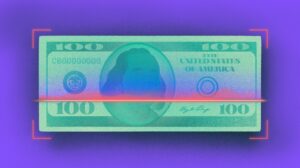Morning Report: Luxury fashion and ecommerce company Farfetch may aim for a $5 or $6 billion valuation when it goes public. Does that make sense?
Farfetch’s impending IPO could fetch a high price if the London-based digital fashion commerce company gets the valuation it wants. According to various media reports, the quickly growing and unprofitable company could shoot for a valuation in the $5 billion to $6 billion range.
Follow Crunchbase News on Twitter
Is the firm worth such a figure? To answer the question, let’s take a look at its last few private valuations and compare its projected worth against its financial performance.
Prior Valuations
Farfetch raised a $110 million Series F in May of 2016. The round raised the valuation of the British company to around $1.5 billion after the new equity was counted.
The company was, therefore, a unicorn before it raised its massive $397 million round from Chinese Internet giant JD.com in June, 2017. Regrettably, the valuation at which JD invested the capital isn’t known.
However, there were signs that the company’s worth jumped during the capital event: Around the time of the JD round, there were reports that Farfetch could aim for an IPO valuation of around $5 billion.
So the firm’s valuation likely went from around $1.5 billion in 2016 to something at least $400 million higher in 2017. It is likely now shooting for a multiple of its Series F valuation as it goes public.
Valuing Growth
When Crunchbase News covered Farfetch’s IPO filing we followed a mostly performance angle, leaving valuation talk aside. After all, the company will set an IPO price range and we’ll be able to run the numbers from there.
However, with the possible goal posts set at $5 billion and $6 billion we can do a little work.
Let’s do some basic stuff first. Farfetch reported full-year 2017 results and half-year 2018 results, but we can get trailing twelve-month figures by summing its last four quarters together.
Here are the resulting sums:
- Farfetch revenue, trailing twelve months: $480.9 million.
- Farfetch run rate (most recent quarter times four): $579.2 million.
- Farfetch gross profit, trailing twelve months: $247.3 million.
- Farfetch gross margin, trailing twelve months: 51.4 percent.
- Farfetch loss after tax, trailing twelve months: $151.4 million.
- Farfetch net margin, trailing twelve months: -31.4 percent.
With those, we can do some work. Bear in mind that the firm’s operating and investing cash burn rates are increasing as the firm’s after-tax losses rise and its EBITDA becomes even more negative.
At a $5 billion valuation, Farfetch is shooting for a trailing revenue multiple of 10.4. That falls to 8.6 when we use a run-rate figure for the company. At a $6 billion valuation, the two figures rise to 12.5 and 10.4, respectively.
Those are, in effect, SaaS multiples. But Farfetch is an ecommerce company that also has a physical-retail component. That places it pretty damn far from software profits and recurring revenue.
There is a good reason why Farfetch may hope for such a rich revenue multiple and a good reason why not. 1 The anticipated multiples may make some sense given that Farfetch is growing faster than most SaaS companies. The company grew 55 percent from H1 2017 to H1 2018—far greater than the median for cloud and SaaS companies.
On the other hand, with gross margins of around 50 percent, Farfetch generates far less profit per dollar of revenue than most software companies, meaning that its revenue is, dollar-for-dollar, worse. That the company is also quite unprofitable on an after-tax basis isn’t encouraging either; the firm has reached scale but is moving further from the black, a bad sign.
Farfetch is, therefore, asking for a SaaS multiple with worse margins and ballooning losses, a tough sell when its revenue growth is decelerating (the company grew a faster 59.4 percent from 2016 to 2017 compared to its most-recent 55 percent pace, and an even faster 70.1 percent from 2015 to 2016).
Adding to above, Bloomberg recently ran some numbers on comparable businesses, coming to the following conclusion:
If Farfetch really is able to crack online luxury retail without becoming a big spender itself, then it deserves a premium. But given that it is hard to see how its investment needs will wind up being as slim as the cigarette pants on its site, its prospective valuation might prove to be quite farfetched.
We can safely wrap by saying that a $5 or $6 billion valuation for the company is expensive, given what we can figure out from this distance.
But it’s 2018 and growth is worth more than it normally is. I suspect that the pricing of Farfetch’s IPO will be illustrative as to the current appetite of the public markets for high-growth, high-risk tech shares.
Top Image Credit: Li-Anne Dias
There are more than one of each, but we’ll touch on the two most obvious.↩

Stay up to date with recent funding rounds, acquisitions, and more with the Crunchbase Daily.








67.1K Followers